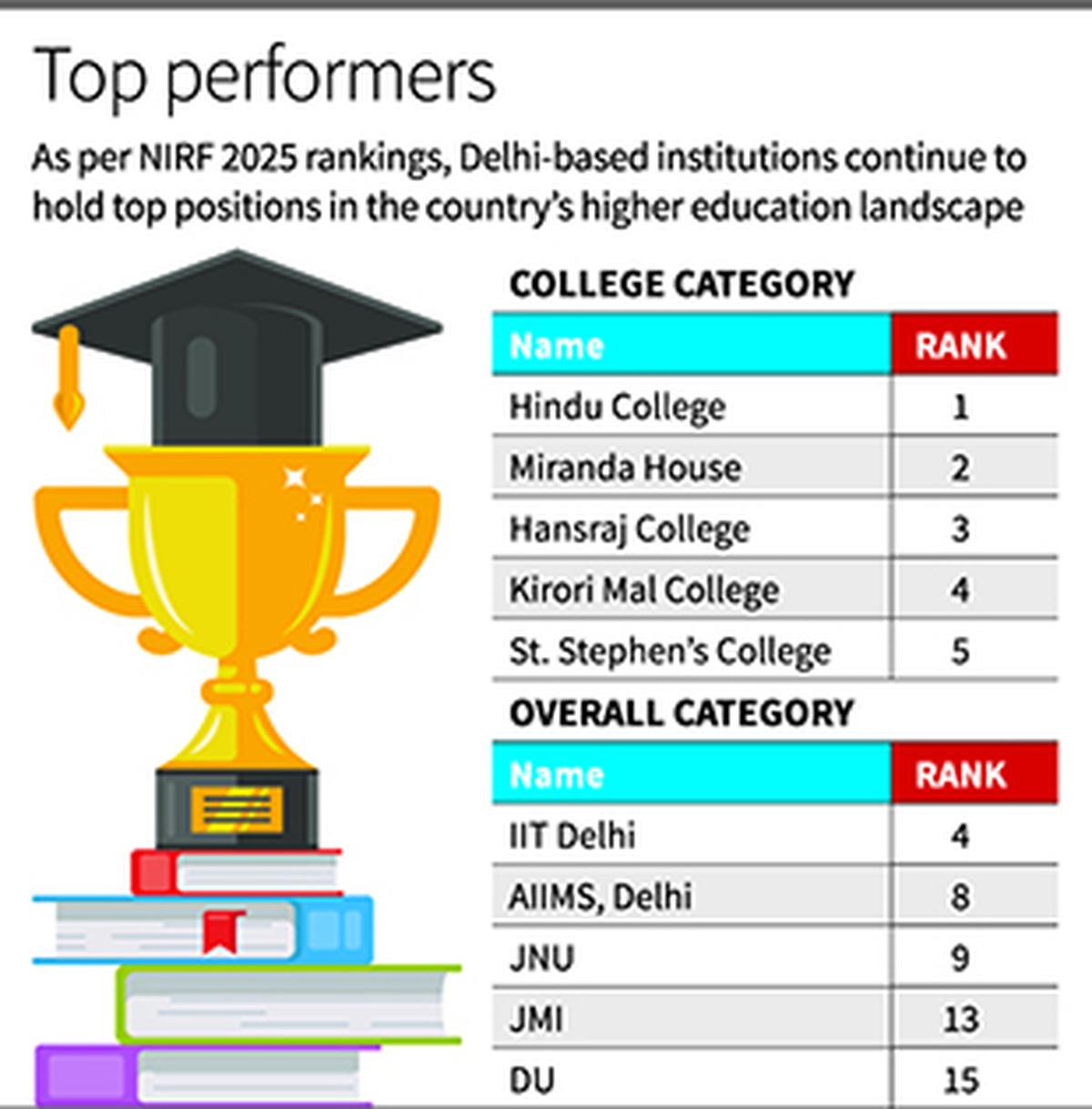National Institutional Ranking Framework

- 10 Sep 2025
In News:
The Ministry of Education has released the India Rankings 2025 under the National Institutional Ranking Framework (NIRF), first launched in 2015 to provide a transparent, data-driven methodology for ranking higher education institutions (HEIs).
Background
- Introduced in 2015 by the Ministry of Education (then MHRD).
- First rankings released in 2016 with one category (Universities) and three domains (Engineering, Management, Pharmacy).
- Now expanded to 9 categories and 8 subject domains, with SDG-based rankings introduced in 2025.
- Aim: To benchmark quality, ensure accountability, guide students/parents, and align with NEP 2020 goals of making India a knowledge superpower by 2047.
Parameters of NIRF (Weightage)
- Teaching, Learning & Resources (30%)
- Research & Professional Practice (30%)
- Graduation Outcomes (20%)
- Outreach & Inclusivity (10%)
- Perception (10%)
- Total of 19 sub-parameters used.
- Data sourced from institutions and third parties like Scopus, Web of Science, Derwent Innovation for publications, citations, and patents.
Participation & Growth
- 2025: 7,692 unique institutions applied (14,163 submissions), compared to 2,426 in 2016 – a 217% rise in participants and 297% rise in applications.
- Rankings now cover 17 categories, including overall, universities, colleges, research institutions, medical, dental, law, pharmacy, management, architecture & planning, agriculture, open universities, skill universities, state public universities, innovation, and SDGs.
Key Highlights of 2025 Rankings
- IIT Madras: Retains 1st rank in Overall category for the 7th year and Engineering for the 10th year. Also topped Innovation and SDGs categories.
- IISc Bengaluru: Ranked 1st among Universities for the 10th year; also leads in Research Institutions for the 5th year.
- IIM Ahmedabad: Topped Management for the 6th consecutive year.
- AIIMS Delhi: 1st in Medical for the 8th year; also ranked 8th in Overall. Additionally topped Dental for the first time.
- Jamia Hamdard (Delhi): 1st in Pharmacy for the 2nd year.
- IIT Roorkee: 1st in Architecture & Planning for the 5th consecutive year.
- NLSIU Bengaluru: Retains 1st position in Law for the 8th year.
- Hindu College (Delhi University): 1st among Colleges for the 2nd year, displacing Miranda House. Six of the top ten colleges are from Delhi.
- Indian Agricultural Research Institute (Delhi): 1st in Agriculture & Allied Sectors for the 3rd year.
- IGNOU (Delhi): 1st in Open Universities category for the 2nd year.
- Symbiosis Skill & Professional University (Pune): 1st in Skill Universities for the 2nd year.
- Jadavpur University (Kolkata): 1st in State Public Universities (introduced in 2024).
Significance
- NIRF has evolved into a credible national benchmark for higher education, enhancing global competitiveness, transparency, and inclusivity.
- With new categories such as Innovation, Skill Universities, and SDG rankings, it reflects India’s effort to link education with sustainability, entrepreneurship, and national development goals under NEP 2020.
- Participation trends demonstrate growing institutional acceptance of NIRF as a fair and transparent ranking mechanism.
